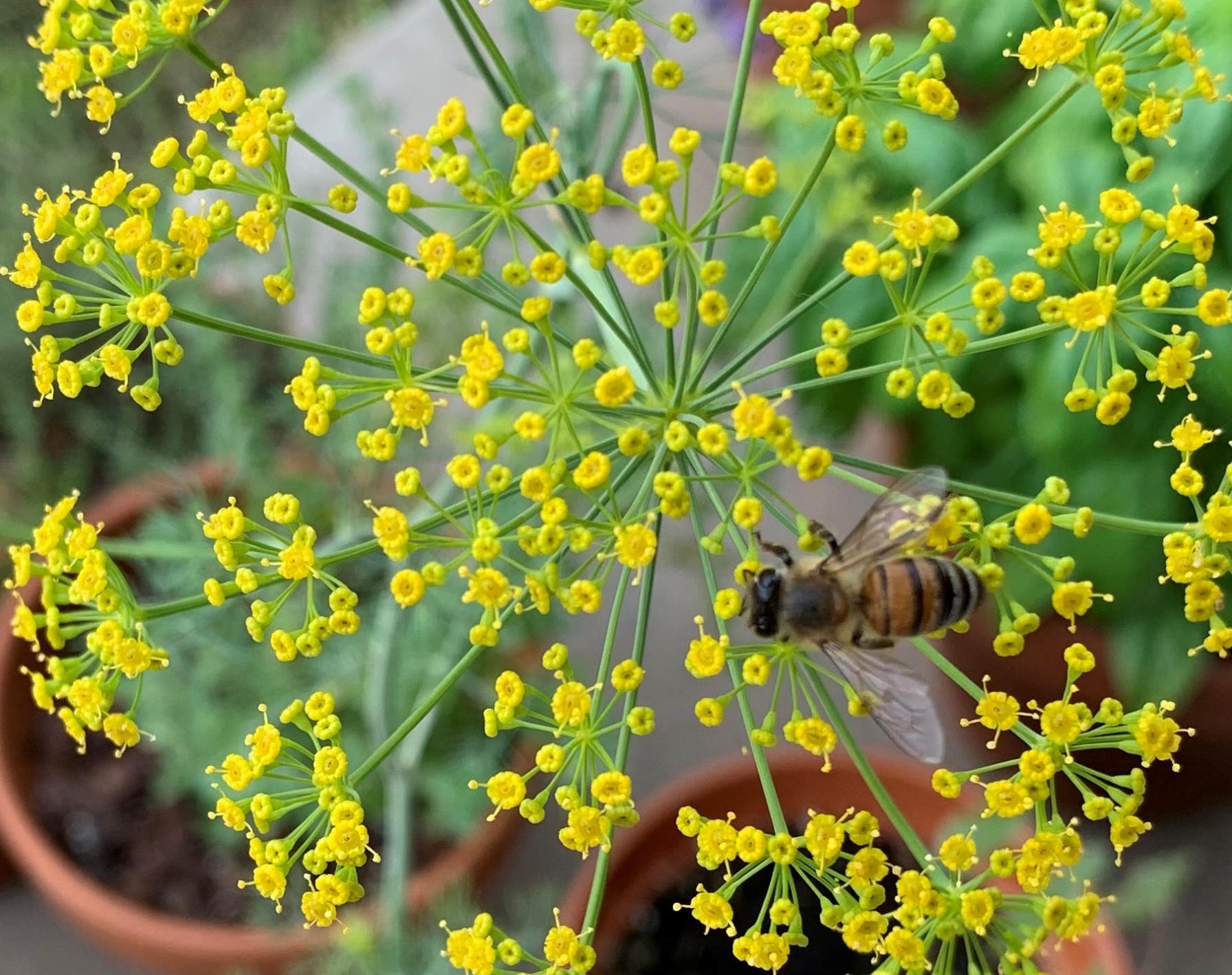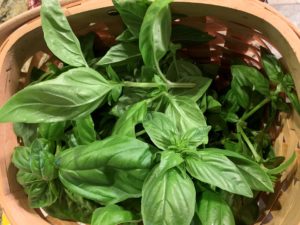Dill is an annual, self-seeding herb that has wispy stems and feathery leaves. Both the leaves and seeds are edible, and they are perhaps best known for flavoring pickles. But dill is also used to season soups, fish, roasted potatoes, and other vegetables.
In addition to seasoning foods, this native Mediterranean herb serves another important function. It attracts beneficial insects like ladybugs, parasitic wasps, lacewings, praying mantises, hoverflies, and honeybees. It is also considered a host plant for black swallowtail caterpillars (a.k.a. parsley caterpillars or parsley worms).
Dill can also repel cabbage loopers and cabbage worms and moths, spider mites, squash bugs, and aphids. Conversely, dill attracts tomato hornworms so plant it away from tomato plants and use it as a trap crop to lure them away.
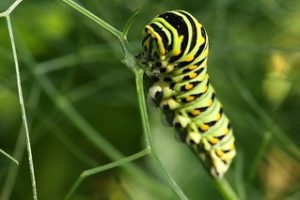
How to Plant
Dill is somewhat adaptive to most soil types, however, it prefers well-draining soil with a pH between neutral and slightly acidic. While it is possible to grow dill from transplants, many recommend direct sowing dill seeds because of its long taproot. Plant seeds 1/8 to 1/4 inch (.3 to .6 cm) deep and lightly cover with soil. In order to germinate, the soil temperature needs to be at least 60º F (15º C). Seedlings will emerge in about one to two weeks. Once they reach a few inches tall, thin to every 12 to 18 inches (30 to 45 cm). Depending on how much dill you need, you may want plant additional dill every few weeks to have a continuous supply through the growing season.
Dill in Containers
Dill grows very well in containers. One advantage of growing dill in containers is that you can bring the plant inside during the winter. Another benefit is that you can move the dill around your garden as needed for pest control.
This article contains affiliate links. If you make a purchase using one of these links, I will receive a very small commission at no additional cost to you, and it will help me maintain this website. Rest assured, I only recommend products I actually like!
You will need to choose a container that is at least 12 inches (30 cm) deep to give the tap root room to grow. Dill plants vary in size depending on the variety, but in general, for containers that are 12 inches (30 cm) in diameter, it is recommended that you grow only one plant. If you are using the Square Foot Garden method, plan on growing one plant per one square foot.
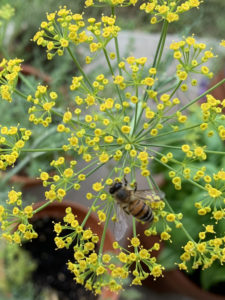
Sun, Soil, Water and Fertilizer
Dill requires at least six hours of full sun and preferably eight. If you live in a hot climate, dill can tolerate some shade in the afternoon. Like basil, dill prefers somewhat moist soil so do not allow it to dry out or it may bolt (go to seed). However, if the tips of the leaves start to turn yellow, it is probably getting too much water.
If you started with soil that is rich in organic matter, chances are you will not have to fertilize. But if you choose to, use an organic balanced fertilizer.
Dill plants can be a bit flimsy so you may need to stake them if you live in a windy area. You can also prune the plant to make it more bushy.
Dill plants have umbels, which is a cluster of flowers that have short stalks that spread out from a common point. The clusters resemble the ribs of an umbrella. Carrots, parsley, coriander, and fennel also have umbels. If you are not going to save dill seed you will need to pinch the flowers off to keep flower and seed heads from forming. This will also encourage the plant to produce more leaves.
Companion Planting Do’s and Don’ts
Dill makes a great companion for many plants in your garden because it attracts beneficial insects that prey on garden pests. Cucumbers, asparagus, basil, onions, lettuce, cabbage, cauliflower, broccoli, Brussels sprouts, kale, kohlrabi, Swiss chard, corn, and tomatoes can all benefit if dill is growing nearby. However, keep in mind that mature dill plants that have flowered are said to stunt the growth of tomatoes and carrots. Thus, if you are planning to use dill as a companion plant for tomatoes, grow it in a container so that it can be moved away from the tomatoes when it matures.
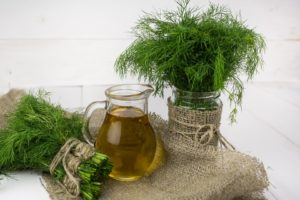
Do not plant dill next to carrots, caraway, or fennel because they are members of the same plant family and may inadvertently cross pollinate, causing the produce to taste bitter. What’s more, dill may attract carrot flies which can be harmful to carrots, parsnips, and celery.
Lavender and members of the nightshade family, like peppers, potatoes, and eggplant also do not do well with dill as their neighbor.
How to Harvest Dill Leaves
You can harvest dill leaves when the plant is about six inches (15 cm) tall. Harvest the older leaves first and do not harvest more than 1/3 of the plant. If you harvest leaves at a leaf juncture it will encourage more horizontal growth resulting in a bushier plant.
Use freshly harvested dill right away or store in bag in the refrigerator for a few days. You may also dry dill using a dehydrator or in the oven on its lowest setting. Fresh or dried, dill is a wonderful herb to always have on hand!
How to Harvest Dill Seeds
If you want to harvest dill seeds, allow the plant to flower and stop harvesting the leaves. You will find that pollinators love the tiny flowers! Eventually, the blossoms will fade and seed pods will develop. Once the seed pods turn brown, cut the umbels and place them in a baggie or paper sack. Shake to separate the seeds from the plant and remove any plant debris. Store the seeds in small bags or seed packets in a cool, dark and dry place. Or you can allow the seeds to remain on the plant where they will fall off and reseed the soil for next season.
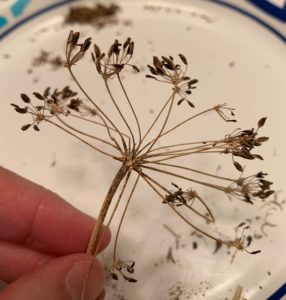
Pests and Diseases
Dill is relatively disease resistant although it may develop a fungal diseases like cercospora leaf spot, downy mildew, or powdery mildew.
As for pests, root knot nematodes can pose a problem, especially for dill’s long taproot. The parasites make it hard for the roots to absorb nutrients and water from the soil. To combat this problem, there are a number of treatment methods you can employ. See this helpful article for more information.
As for pests, armyworms, cutworms, tomato hornworms, and parsley caterpillars (the larvae of black swallowtail butterflies) may come to roost on your dill plant. Routinely inspect your plants for these pests and remove them by hand, or set aside a plant or two as a host plant or trap crop.
There does not seem to be a consensus when it comes to aphids. Some gardeners report that dill repels aphids, while others say it attracts them. You can learn more about this ever-present garden pest and how to get rid of them in this article.
Varieties
Here are some of the more popular dill varieties:
Fernleaf dill is a dwarf variety that works well in indoor or outdoor containers. It is slow to bolt, which is especially beneficial in warmer climates.
Dukat provides abundant leaves and larger seed heads. It is excellent for pickling.
Bouquet is a larger variety. It is known for producing large blooms and seeds and is also an excellent choice for pickling.
Mammoth dill is a tall variety that grows 36 inches (91 cm) or more. It is also good for pickling.
Dill is an airy plant that does more than just provide pickles with their iconic name and flavor. Dill plants also attract beneficial insects that can help with pest control, and their delicate flowers are a beautiful addition to any garden.
Thank you for reading this article! If you found it helpful, please consider sharing it with others on social media!
